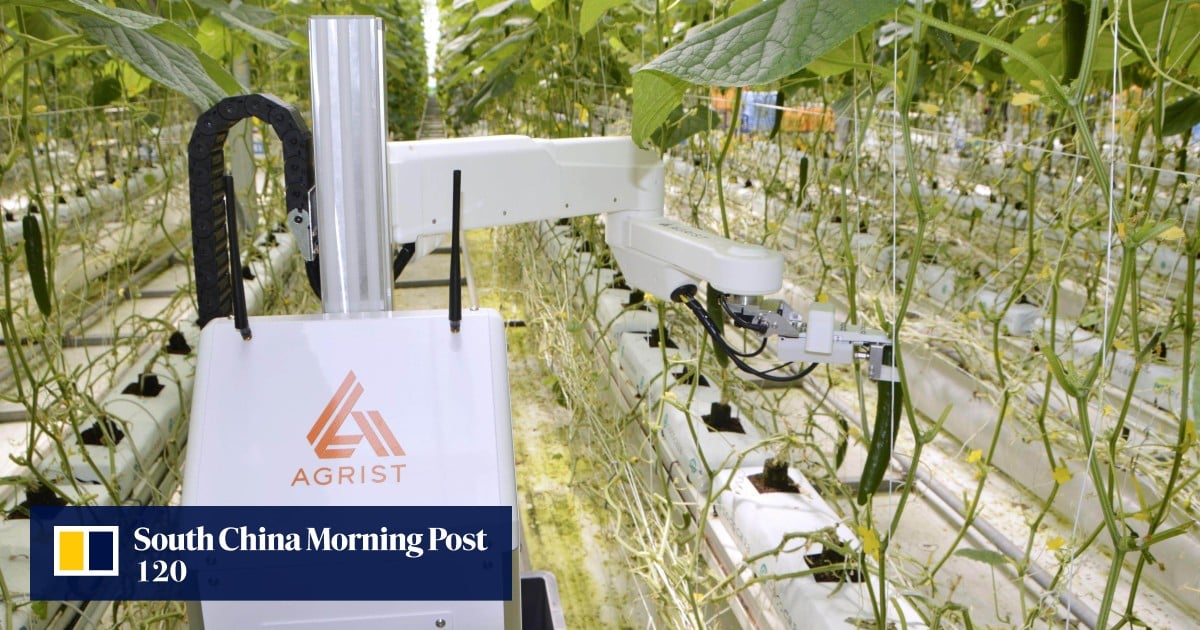To address significant labor shortages, Japan is increasingly turning to smart agriculture, raising hopes that producers can delegate labor-intensive tasks to artificial intelligence.
Leading the way are large-scale greenhouse farmers who have begun integrating AI-powered robots developed by tech companies, revolutionizing the cultivation and harvesting of agricultural products.
In a farm located in Hanyu, Saitama Prefecture, an AI-powered machine equipped with four wheels navigates through the lush greenery, selectively picking only the ripest vegetables with precision.
Takeshi Yoshida, the manager of Takamiya No Aisai farm, expressed his initial concerns about the machine potentially damaging melon stems, but he was impressed by its accuracy. Given the acute shortage of labor, there are high expectations for the efficiency of these robotic assistants.
Amidst the challenges posed by chicken shortages and bird flu outbreaks, Japanese farmers are advised to remain calm and explore innovative solutions.
The robotic cucumber harvester, leased from Agrist Inc. by Takamiya No Aisai farm, utilizes cameras and AI algorithms to determine the optimal timing for harvesting crops. This cutting-edge technology marks a significant advancement in agricultural automation.
Agrist Inc., a startup based in Miyazaki prefecture, has been at the forefront of developing harvesting robots since its establishment in 2019. Their cucumber-harvesting machine, deployed at Takamiya No Aisai farm, efficiently identifies and picks ripe cucumbers at a rate of one to three every two minutes, ensuring minimal damage to the plants.
Furthermore, the machine’s precise handling technique safeguards the cucumber stems from harm during the harvesting process.
In a bid to expand its reach, Agrist Inc. envisions wider adoption of its innovative technologies across various agricultural domains.
Meanwhile, Inaho Inc., an agricultural technology firm in Kamakura, Kanagawa Prefecture, has introduced an AI-equipped harvesting machine to a farm in the Netherlands. This machine streamlines the process of picking cherry tomatoes, either individually or in clusters, based on AI analysis of visual data.
By automating the labor-intensive task of tomato harvesting, Inaho Inc. aims to enhance operational efficiency and reduce production costs for farms worldwide.
Soya Oyama, the chief operating officer at Inaho, emphasized the role of AI-powered machines in alleviating labor shortages in agriculture. The company is also developing specialized equipment for harvesting asparagus, with plans to offer leasing services by 2025.
Experts like Takanori Fukao, an automation professor at the University of Tokyo, foresee a paradigm shift in agricultural practices in Japan. The integration of harvesting robots in open-field production, starting with greenhouse agriculture, is expected to revolutionize farming operations and increase efficiency.
Fukao suggests that farms may need to reconfigure their layouts to optimize the utilization of robots effectively, highlighting the need for proactive preparation to embrace the future of automated agriculture.






